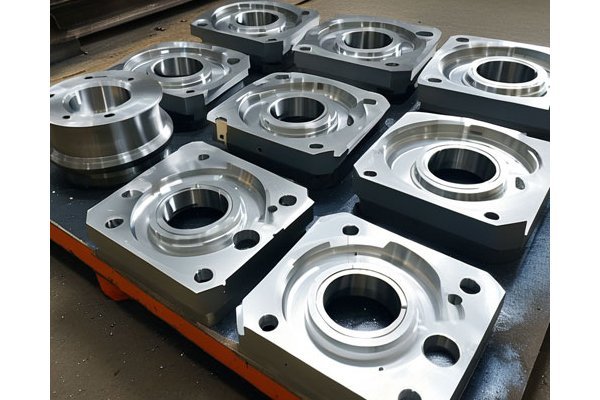Did you know that aluminum is one of the most widely used metals in the aerospace industry, accounting for approximately 80% of structural aircraft weight? This lightweight yet durable metal has remarkable properties that make it an ideal choice for various applications in aviation, from fuselage components to engine parts. However, one critical factor that influences aluminum’s usability in CNC (Computer Numerical Control) machining, particularly in aerospace applications, is its melting point. Understanding how the melting point affects machining operations can lead to improved processing techniques, enhanced product quality, and ultimately, safer and more efficient aircraft.
In this comprehensive blog, we will delve into the intricate relationship between the melting point of aluminum and CNC machining processes used in the aerospace sector. We’ll explore the critical challenges posed by various aluminum alloys, how these challenges can be overcome, the best practices for CNC machining of aluminum parts, and innovative solutions that keep the aerospace industry soaring high.
Understanding Aluminum Alloys: The Basics
Before diving deep into the melting point’s implications, it’s essential to understand the fundamentals of aluminum alloys. The two key categories of aluminum alloys are:
Each alloy has a specific melting point range, which can significantly influence the machining process, tooling choices, and even the mechanical properties of the final product.
The Importance of Melting Point in CNC Machining
The melting point of aluminum is the temperature at which it transitions from a solid to a liquid state, which averages around 660°C (1220°F). This transformation is critical in CNC machining because it affects tool engagement, chip formation, and ultimately, the finish quality of the machined part.
Key Factors Related to Melting Point:
While aluminum is a relatively easy material to machine, challenges arise when considering its melting point:
Solutions to Overcome Machining Challenges
Understanding these challenges is half the battle. Now, let’s discuss how to overcome them effectively:
When designing aerospace components, it’s critical to:

A Focus on Specific Aluminum Alloys
Let’s now narrow down our focus to specific aluminum alloys commonly used in aerospace applications and discuss their melting points and unique machining challenges.
CNC Machining Best Practices for Aerospace Applications
Effective and efficient CNC machining of aluminum alloys that are critical to the aerospace industry necessitates adhering to best practices:
Implement rigorous quality control checks throughout the machining process. This includes regular inspections during critical phases and implementing dimensional checks to ensure that the part accurately meets specifications.
Maintain meticulous records of machining processes, material specifications, and heat treatment parameters. This documentation is crucial for both quality assurance and compliance with aerospace industry regulations.
Invest in continuous training for machinists and operators. Familiarize them with the latest tools, techniques, and advancements in CNC machining technology to ensure that they are well-equipped to handle challenges effectively.
Innovations in Aerospace Machining Technology
As the aerospace industry continues to evolve, so do the machining technologies used to produce high-quality components:
Incorporating additive manufacturing in conjunction with CNC machining offers significant benefits, particularly for producing complex geometries that minimize material wastage while maintaining structural integrity.
Advanced CNC machines equipped with artificial intelligence can analyze machining data in real-time, enabling optimization of parameters for reducing cutting temperatures and improving the overall efficiency of operations.
The integration of traditional CNC machining with newer technologies such as laser or waterjet cutting can enhance versatility. These hybrid processes can be particularly effective for complicated geometries and materials sensitive to high temperatures.
: The Importance of Melting Point Awareness in CNC Machining
In conclusion, the melting point of aluminum significantly impacts CNC machining processes, especially within the aerospace industry where performance, safety, and precision are paramount. Understanding the implications of aluminum’s melting point enables manufacturers to adapt their machining strategies, select appropriate materials, and implement best practices that enhance quality while minimizing risks.
As we look toward the future, the need for reducing weight while maintaining strength continues to challenge engineers and machinists alike. By focusing on the melting point and incorporating innovative machining practices, the aerospace sector can continue to deliver high-performance components that advance aviation technology.
This blog should prompt you to reflect on the critical aspects of aluminum machining that are worth deeper consideration. The aerospace industry’s reliance on quality machining processes is a topic that cannot be understated—leading to safer, more efficient flight around the globe. Keep this knowledge in mind as you navigate your own CNC machining endeavors!






